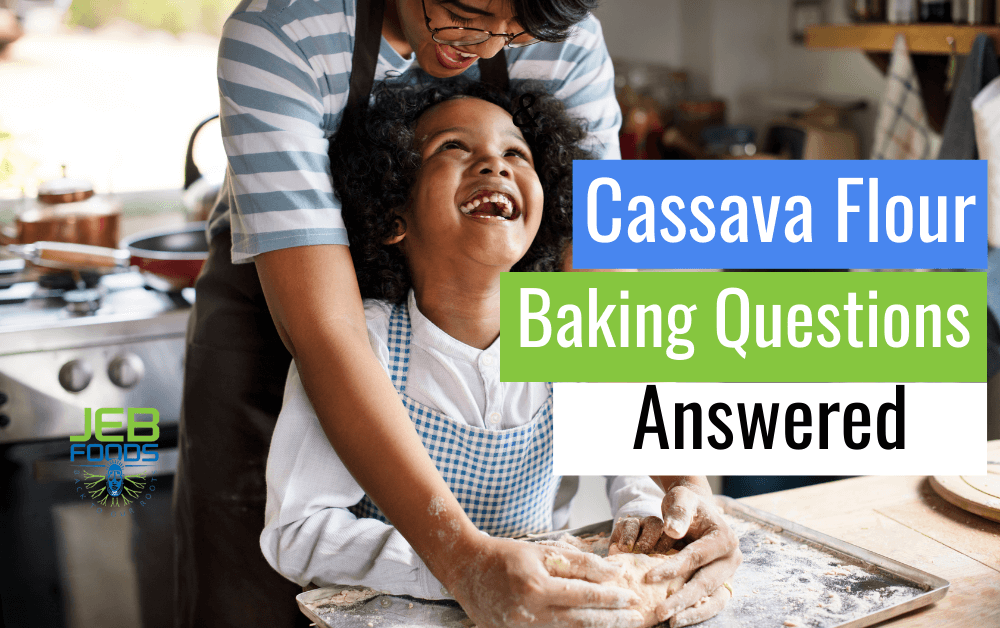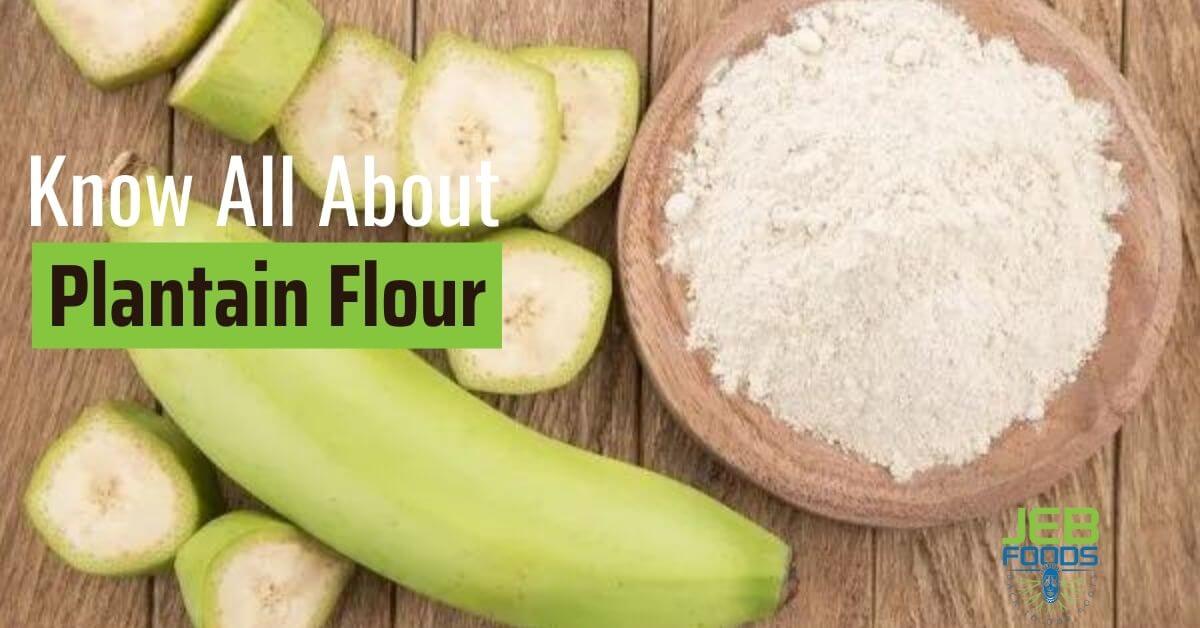As a baker, I mostly have questions about flours, mixes etc. I am sure you have yours as well.
I have been through thick and thin with experimenting with flours and mixes in my baking world.
Sometimes, there are viral situations like chefs on tiktok making brands blow out as influencers.
But here, I will explain most of the baking questions that are the most popular based on trends, with my concentration on cassava flour due to its huge health and nutritional benefits.

Does Cassava Flour Rise With Yeast?
Table of Contents
ToggleThe simple answer to this is No
Cassava flour does not rise fully when combined with yeast (because of its lack of gluten); therefore, it is not the most excellent alternative for yeasted baked products.
It does not mean that both yeast and cassava flour cannot be mixed, but the cassava flour has to be inadequate.
Can I Mix Yeast With Cassava Flour When Baking
Yes, cassava flour can be mixed with yeast while baking bread.
Due to my interest, I have tried to bake bread with cassava flour and yeast, and the result was amusing.
Cassava flour mixed with yeast can still be used to bake, especially if you want a crumbly and a bit more dense bread.
See how you can make the cassava yeast bread recipe
How Much Water Is Needed When Baking With Cassava Flour
Cassava flour absorbs more water than other flours, making it denser. You might need to use a little less cassava flour than you anticipate.
The water-flour ratio is interesting to know if you want to bake bread yourself at home.
Have you ever had bread dough that was completely un-moldable because it kept clinging to your fingers no matter how much flour you used?
If that was the case, your water-to-flour ratio was not ideal, you had too much water in your dough, or you may not have kneaded the dough long enough.
The perfect water-flour ratio is given when the dough no longer sticks to the hands after long kneading of water and flour.
You must knead the dough for a minimum of 5 minutes before it stops adhering to your fingers.
This is because the glue in the flour takes a certain amount of time to form a framework in the dough.
The perfect ratio of water and flour is 100 g of cassava flour to 60 g of water.
Can You Use Xanthan Gum To Bind Cassava Flour
If you make a recipe that calls for yeast, you can use Xanthan Gum as a replacement. Xanthan Gum helps bind the cassava flour together.
If you’re not vegan, adding an extra egg to a recipe may also help bind foods that call for yeast. For most recipes, add 1/2 tsp (2.46 ml) xanthan gum for each cup of flour that you’re using.

Best Tips For Baking With Cassava Flour
Here are some helpful hints for baking using cassava flour.
It’s a very dusty flour, so be gentle: Don’t plop it into the bowl, or a dust cloud consumes you.
It takes in more liquid than regular flour, which is of higher proportion than all-purpose flour.
While packages say it’s a cup for cup substitute, I’ve found that you need to scale back the amount of cassava flour when making a replacement with other flour.
Cassava flour imparts an earthy, subtly nutty flavor—not surprising since it’s made from a ground-up root vegetable, so keep this in mind when tasting your finished recipe.
Recipes rely on copious amounts of cassava flour and are thicker/deeper (like loaf cakes).
These have posed a challenge as they tend to come out over-baked on the outside while remaining underdone and gummy in the center.
Gluten-free doughs like cassava flour are often stickier than traditional ones. If the dough is too sticky for further processing, just put it in the refrigerator for a few hours.
Put the baked product in the refrigerator for storage.
What Foods Should Not Be Cooked With Cassava Flour
Avoid cooking things that have to rise. Cassava flour is denser and works excellent in cookies and brownies but performs poorly in bread that rises significantly.
Avoid using cassava flour in recipes that require your food to rise, like cakes.
But you can still use cassava flour mixed with yeast for baking with incredible results
Baking With Cassava Flour Fixing Too Dry
Baking gluten-free bread is not without its difficulties. It might be challenging to achieve the perfect loaf because it is too dry, not rising, or just not tasting very well.
There are certain times the water-cassava flour mixing ratio may not be thoroughly followed, which either makes our dough too dry or too wet.
If you have dry dough while using cassava flour to bake, what do you do?
Make sure you select a flour blend that will work well together. Flour mixtures are necessary if you do not utilize xanthan gum in your recipes.
Refrain from adding extra flour to a gluten-free bread dough if it appears too sloppy or soupy. And do you recall the phrase “over-mixing may make it tough”?
Also, make sure that all of your components are at room temperature — the temperature is essential for making gluten-free bread dough. Gluten-free flours and chilled eggs do not get along.
There are additional steps to do if the cassava flour mixture remains dry after completing everything I described above. If the dough is too dry and crumbly, add additional water or chill it for a few hours in the refrigerator.
Hopefully, these suggestions may assist you in resolving some of your dry and crumbly gluten-free baking difficulties.
What Is A Good Substitute For Baking With Cassava Flour
I usually use cassava flour and it is always available. Get it here
But in case you do not have access to it and desire to have baking ith the same result, then you can try out these alternatives to cassava flour.
Tapioca starch will work well in place of cassava flour. Because it is derived from the same cassava plant, it has a similar flavor profile from the start.
Tapioca starch and cassava flour have grown so identical that they are sometimes mistaken.
The significant distinction between cassava flour and tapioca flour is in their processing procedure. Because most of the minerals and fiber in tapioca flour have been removed, it is highly refined.
Tapioca starch in baking
Tapioca starch, like cassava flour, is gluten-free. So, if you’re concerned about your gluten intake, you’ve got a healthy alternative right here.
While tapioca starch is a modified product, it still has some essential health advantages.
It possesses characteristics that can help you lower your insulin levels, for example. Tapioca starch also has no cholesterol, making it an excellent choice for those who want to lose weight.
The only disadvantage of tapioca starch is its high glycemic index. Tapioca starch may not be the ideal option for you if you want to reduce your sugar intake.
If you’re looking for a cassava flour alternative, potato starch is another gluten-free choice.
Given that many individuals are always on the lookout for gluten-free choices, this one has cleared the first and most important obstacle.
While potato starch is a versatile substance, it shines brightest when used as a thickening. It has a thicker consistency than cassava flour, resulting in a more dense result when used in a dish.
Its thickness, as predicted, makes it an excellent replacement in baking applications – even if thickening is where it shines the most.
If you’re thickening using potato starch, you may easily replace it with cassava starch in a one-to-one ratio.
You only need around 25 to 50 percent of the typical amount of potato starch; the rest may be made up of other flour-like components.
How To Get Rid Of Gumminess When Baking With Cassava Flour
Gumminess is a problem that makes gluten-free bread nearly hard to consume.
It may happen to any type of bread, including rolls, muffins, loaves, scones, and even pancakes.
It’s that awful gummy texture that you overlook until you bite or rip into that roll.
Gluten-free bread can have a gummy flavor or look for a variety of reasons. An out-of-balance flour-to-starch ratio usually causes it.
The solution to a beautifully textured, non-gummy bread or gluten-free baked food begins with the recipe and concludes with the finished product and cooling procedure.
The starch-to-flour ratio specified in the recipe may result in gummy results. If the recipe you’re using has more than 50% starches, you’ll end up with a highly gummy loaf of bread.
Consider this: the overall flour/starch combination in your recipe is 100%. A dish should contain no more than 20 percent – 25 percent of each type of carbohydrate.
Effect of Gumminess on Gluten-free flour
Gluten-free bread dough is not the same as regular bread dough, and it benefits from being well combined. Three minutes is not unusual. Mix the batter well to achieve a lighter, air-pocketed batter.
The size of the pan also matters when it comes to gluten-free baking. Even the slightest change in a pan – an 8 x 4 for a 9 x 5 – may make a huge impact.
Once the bread tests are done, turn off the oven, open the door, and allow it to cool for some minutes before transferring it to a wire rack (between 205 – 210 F).
Allowing the bread to sit in the oven for a few minutes maybe just be what it needs to firm up and avoid a sticky texture.
When it’s time to remove it from the pan, allow it to cool fully before cutting into it, bread that has just come out of the oven is gooey, so let it cool before slicing it.
Despite the difference in gluten-free bread compared to bread, gluten-free bread should not be gummy or have an undercooked center.

Is Cassava Flour High In Glycemic Index
Cassava, manioc, or Yuca is a starchy tuberous root. Cassava has a high glycemic index due to its high starch content.
According to The International Tables of Glycemic Index Values, cassava has a glycemic index of 941 when peeled, cooked, frozen, thawed, and then reheated.
Cassava flour is a healthier alternative for diabetes than wheat flour due to its high fiber and low-fat content and is known for its high glycemic index and a high glycemic load in general. Cassava should be consumed in moderation by persons with diabetes mellitus.
What Else Has to Be Considered When Baking With Cassava Flour
When baking with cassava flour, there are a few points to keep in mind since it absorbs a little more water than other products.
As a result, less cassava flour has to be used in some dishes than, for example, wheat flour.
Otherwise, it could be that the bread is already through on the outside, and the dough is still very soft on the inside. The flour is also comparatively dusty.
Final Thoughts
Many people like to bake with cassava flour as it does not have a sour taste or smell that fermented and sprouted grain flours can sometimes carry.
If you are baking something like bread or cake and need flour that rises well, cassava flour also known as (yuca), can replace a portion of the flour in the mixture.
Especially for recipes that do not require an increase, cassava can totally replace grain flours.
See all about Cassava Flour.
Many people find that cassava can be used in recipes without even being detected and that it is virtually indistinguishable from its wheat-based counterparts.
Its texture is suitable for baking things like denser brownies, cookies, and bread, or you can use it in flavorful dishes to thicken sauces or form burgers/patties.




